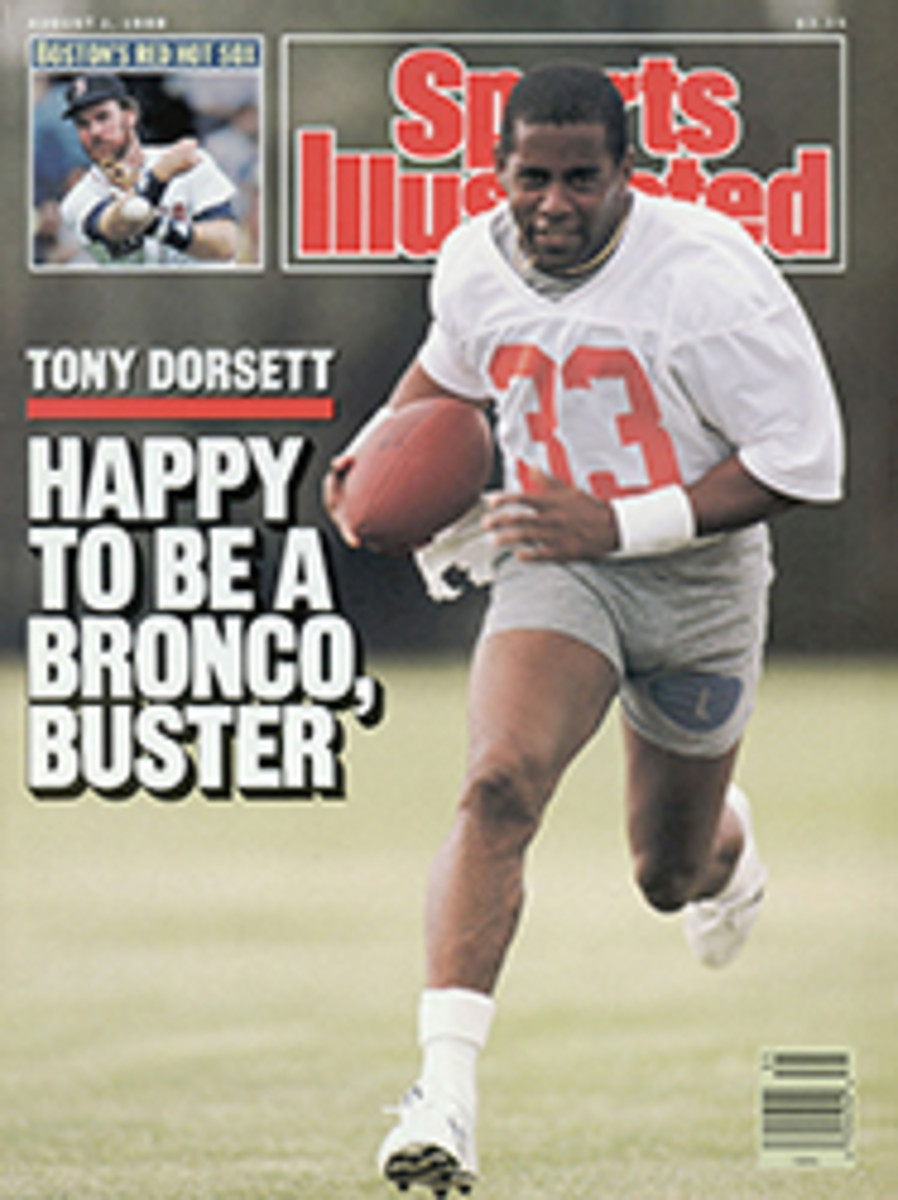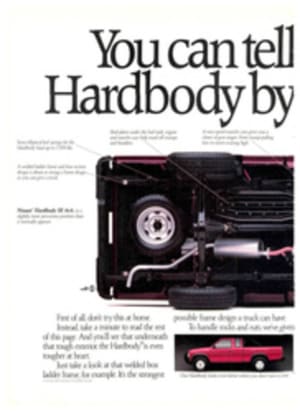
BACK FROM EXILE
In terms of flash, spirited oratory and team unity, the Democratic party can't hold a candle to the new-look U.S. Davis Cup squad, which when last seen was wandering the wilds of world tennis in search of exotic locales for the next episode of Rambo Meets the Code of Conduct. But last week, in the midst of a winter wind that lifted tiles off the stadium roof of the Buenos Aires Lawn Tennis Club, America's brand-new ticket of Andre Agassi and John McEnroe lifted the U.S. back into the Davis Cup picture for years to come. Moreover, with Agassi, the Las Vegas born-again, rattail-coiffed teenager, and McEnroe, the mellowed-out. bicoastal daddy-o and elder statesman, America has a pair of running mates as pop-culturally balanced as any campaign manager could hope.
Both won during Friday's opening round of singles competition, which was no small feat, seeing as how McEnroe had never won a singles match in four tries in Argentina. And the U.S. hadn't won a Cup tie there "in what, 25 years?" said McEnroe. Informed that the correct answer was never, Mac said, "Right, I knew it was a long time."
Then on Saturday came the dreaded two-headed Flaguso; the Wimbledon champion doubles team of Ken Flach and Robert Seguso proved they had recovered sufficiently from their wives' plundering of the leather shops in downtown Buenos Aires to extend their Davis Cup record to 8-0 by routing Javier Frana and Christian Miniussi 6-2, 6-3, 6-4. That gave the U.S. an insurmountable 3-0 lead, thereby rendering Sunday's second round of singles matches meaningless. More important, it meant that America had cleared the last hurdle in its effort to return to World Group Davis Cup play next year.
"It's ridiculous we ever were relegated to the minor leagues," said McEnroe the day after he had opened the tie with a dramatic 6-2, 5-7, 6-4, 3-6, 6-3 victory over Guillermo Perez-Roldan. "I'm excited about this team. The way I feel, I'd like to play the Swedes in the finals right now."
If McEnroe can approach his previous brilliance—and he came close during the last four games against Perez-Roldan—he and Agassi may find themselves in the finals next year. In a Tysonesque annihilation of Martin Jaite (6-2, 6-2, 6-1), the 18-year-old Agassi not only showed that he could slug the ball but, unfortunately, that he could catch one as well. Leading 4-0 in the third set, but with Jaite serving at 40-0, Agassi turned to his coach, Nick Bollettieri, who was seated in a baseline box, and said "Watch this." He then caught Jaite's serve, which was good, to give Jaite the game.
Afterward Agassi said he thought the spectators would love his grandstand play. Instead the proud porte‚Äö√†√∂¬¨¬±s of the old port city responded with whistles and boos as well as a certain amount of shock—a reaction not unlike that of Agassi's mother when she reached him over an international telephone line a few hours later. Even McEnroe was taken aback. "Andre's young and naive, but that was unbelievable," he said. "Too much ham, too insulting to the other guy. Hopefully, he learned a lesson in a spot where it didn't hurt the team."
Although Agassi was apologetic, he later told Flach the hotdog catch was something "I've always wanted to do." Then again, perhaps the bush move was his response to the U.S.'s being relegated to the Davis Cup's bush leagues. Since McEnroe and Jimmy Connors boored their way to defeat in Sweden in 1984—and were, in effect, drummed from the U.S. traveling squad because of their behavior—the American Davis Cup team had to play seven of eight ties on the road. Connors wasn't on hand for any of them, and McEnroe participated only in the one at home. If this seems akin to the Lakers wading through the playoffs without Magic and Kareem, it is. Only it's worse: In the NBA, the crowds on the road don't throw bottle caps at your head.
Death threats hung over the U.S. team last year in Paraguay. A 3-2 defeat there left the U.S. one loss away from a fate worse than death: relegation out of the 16-team World Group and into zonal play, where a team doesn't even get to compete for the Cup. Sure enough, the U.S. squad, with McEnroe back, then lost to Boris Becker-led West Germany in Hartford, Conn., and America was shipped down to the minors.
Beating Peru in Lima this spring was the first step back. But Argentina, with its 3-0 record against the Yanks on the bronze dirt of Buenos Aires, figured to be a much tougher test. McEnroe was sufficiently motivated. This Davis Cup tie, he said, was "a personal vendetta against Argentina. Nobody in America cares about this match, but I've got personal goals. I want to win in this stadium." And, said Mac, "with Andre around I won't force myself into the frame of mind where I have to win."
In other words, the old man could get bailed out by the kid? "I'm just an old-timer trying to get into the new stuff," said McEnroe while explaining how he had practiced with Agassi's racket, which has a rubber band tied between two strings at the bottom of the head. "It really does lessen the vibration on my elbow. I want to try it again."
Buenos Aires was a feeling-out process for Agassi and McEnroe, who didn't know each other well before. Mac had beaten Agassi in a Grand Prix tournament in Vermont two summers ago, when Agassi's hair looked even more bizarre—like Cyndi Lauper's after a fettuccine fight. Said the kid to McEnroe last week, "You must have thought I was some rattailed punk." Replied Mac, "Yeah, the pot calling the kettle black."
In Buenos Aires, McEnroe went out of his way to converse with Agassi's older brother, Phil, about the importance of Andre's doing stretching exercises, limiting his exhibitions and cutting down on showboat clapping with his racket in response to an opponent's winner. Agassi invariably does his applauding when he's administering a severe butt-kicking. "That's rubbing the opponents' faces in it." McEnroe said.
The Americans' initial practice session together in Buenos Aires turned into something extraordinary. "Absolutely electric," said U.S. captain Tom Gorman. "The best tennis I've seen all year." Even McEnroe, who normally abhors practice, called it "great fun."
"Andre pushes John," said Flach. "He gets the most out of him. Andre's game is so uplifting, I think he inspires John, makes him young again."
Whoops. The young and angry McEnroe almost resurfaced on Wednesday when a pushy Argentine television crew tangled Mac up in their cable wires at the practice courts. Gorman, who got entangled, too, intervened just as Mac was about to slam-dunk a mike into the red clay. The next day at the draw, which was held in the chandeliered opulence of Buenos Aires's city hall, the media crush was once again overwhelming, and McEnroe responded by calling the local press "too much like animals." The Buenos Aires Herald in turn said that the Americans had conducted "a mock press conference."
Because Gabriela Sabatini carried the flag for Argentina in the opening ceremonies—Seguso's wife, Carling Bassett, a Canadian citizen, carried the Stars and Stripes—the rumor was dispelled that Sabatini and Perez-Roldan, 18, might be the same person. "This guy is the best-looking thing on a court since Vilas," said a stunned Kim Cunningham of World Tennis magazine. "I think it's his power brows."
On Friday, Perez-Roldan had pulled back from a 2-6, 4-5 deficit, and McEnroe was struggling in the stiff winds and 40° chill. But in the fifth set, after Mac fell behind a break at 3-2, he raised his game, coming to net on everything. "I volleyed better than I have in years," said McEnroe.
"Late in the match it was vintage Mac." said Gorman. "He had that champion's aura again. John even walked differently. Perez-Roldan had to be thinking, Whoa, I haven't seen this stuff before."
The other home-team player, Jaite, saw three quick sets' worth of remarkable stuff. The pigeon-toed Agassi, whose meteoric rise has deposited him at No. 5 on the computer, was leaping off the clay on his groundies, pounding winners into the far corners, embarrassing one of the game's quickest players with disguised drop shots and striding over the sodden dirt as if it were some heavy-metal rock stage, all the while captivating the audience—until he made the most vivid basket catch since Willie Mays. Say nay.
"If I could go back in time, I would not have done it," said Agassi, whose sometimes cloying sincerity ("I'm just trying to enjoy myself so others can enjoy me") is directly off Jim and Tammy's Greatest Hits album. "I never wanted to demean Jaite. He's one of the nicest guys on the tour."
McEnroe, traditionally cynical about successor-phenoms, kept waxing lyrical about his new teammate. "Andre's timing—his eye, picking up the ball—is incredible," said Mac. "His mix of shots, the drops and lobs, the way he clocks the forehand—phenomenal. He's still a kid, but he has that confidence, the attitude, the feeling of a champion. Look, Lendl made himself a great player, but he was never a natural. The last guy like Agassi was Becker. Before him, [Mats] Wilander. Before him...."
Before him, McEnroe. Now there's an old one and a new one—champions, that is. And the U.S. Davis Cup team, back in the major leagues, has 'em both.
PHOTO
DAVID WALBERG
Against Jaite, Agassi marred three sets of extraordinary hitting with a catching error.
TWO PHOTOS
DAVID WALBERG
Canadian Bassett carried the U.S. colors, while Sabatini did the honors for Argentina.
TWO PHOTOS
DAVID WALBERG
McEnroe overcame the home crowd and winter winds to beat Perez-Roldan in five sets.

